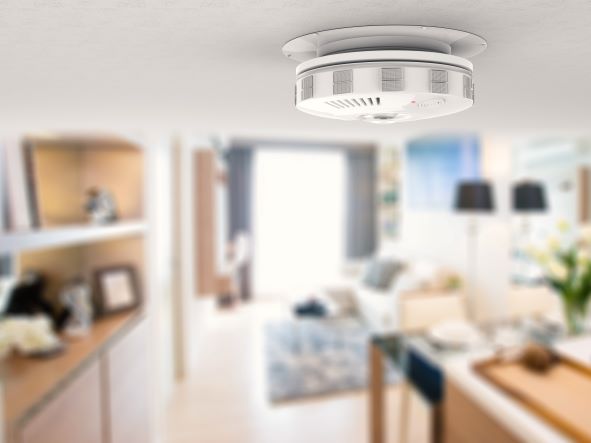Housefires are an unfortunately common event in the UK; in the 2019-20 period alone, over 28,000 dwelling fires were attended by the fire service. The
Housefires are an unfortunately common event in the UK; in the 2019-20 period alone, over 28,000 dwelling fires were attended by the fire service. The two most common causes for these fires were cooking appliances and smokers’ materials, but electrical appliances also accounted for a significant percentage of them. There are many potential causes for a fire in the average household; what can you do personally to reduce the risk presented by these causes?
Update Your Smoke Alarm
While smoke alarms are not a legal requirement for homeowners to install, they are a standard presence in practically every home – and a legal requirement for landlords to install in rented property in the UK. There has also been recent legislation in Scotland that requires all homes to install an interlinked smoke alarm system, to improve fire safety in the wake of the Grenfell tower disaster.
Switch Appliances Off at the Wall
The simplest, and perhaps the most effective, thing you can do to reduce the risk of a fire in your home is to switch appliances off at the wall outlet. Leaving electrical items on standby means there is still a flow of electricity to said item; something as innocuous as a frayed power cable can create a significant fire risk, as live wires can spark and set nearby furniture or carpets alight.
Replace or Repair Older Electrical Equipment
The older an item of electrical goods is, the more likely it is to develop an electrical fault. In electrical goods and appliances with more complex circuitry, capacitors can dry out, leak, and in some cases even explode as a result of age. As such, older, obviously well-worn appliances should be replaced at the first sign of unusual behaviour; alternatively, appliances should be regularly tested and maintained by an experienced electrical engineer to prevent component-based faults and the potential electrical fires that can result.
Replace Candles With Battery Lighting
Candles are a popular form of mood lighting, but the naked flame presents an unnecessarily high risk of fire to the modern home. There is a wide range of safe alternatives available, that can provide a similar light effect without the risk of fire spreading; for example, battery-powered lanterns can be used indoors to create the sense of candle lighting with LEDs.
Supervise Your Kitchen When Cooking
Kitchen fires are one of the more common kinds of housefire, with around twenty people suffering an injury or even casualty each day as a result of them. There are a number of ways fires can start in the kitchen, from grease fires caused by attempted deep-fat frying to items on your worktop catching from proximity to your hob. As such, you should endeavour to remain in the kitchen at all times when cooking. If you do need to leave the kitchen for whatever reason, you should set an alarm to remind yourself to return.
Create an Escape Plan
Sometimes, a fire is simply unpreventable. If all prevention measures fail, it will do your household well to have an escape plan pre-prepared and fully formed. It could be as simple as recognising the next-safest routes to exit the home by in the event of a fire blocking access to the front door. For larger households and families, it is recommended to create a step-by-step escape plan and rehearse it once a month, to ensure everyone can get out safely and calmly if a fire does take place.



















































































































COMMENTS